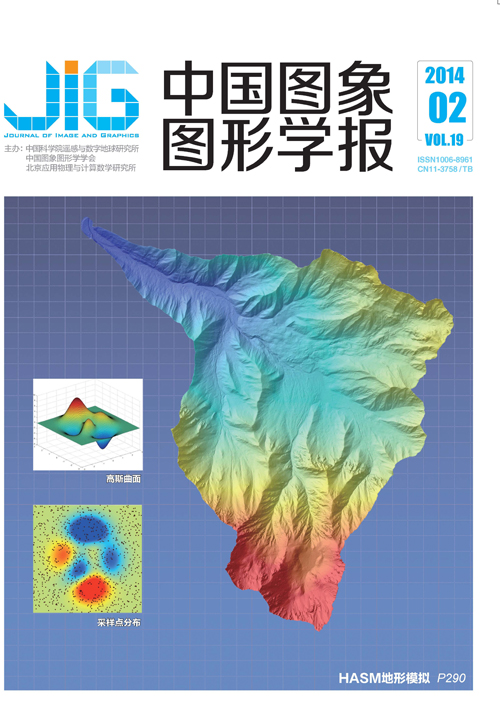
基于方向特征的手掌静脉识别
摘 要
目的 针对已有掌脉识别方法中计算复杂度高、未充分提取有效辨识信息的问题,提出一种计算简单、快速且充分利用掌静脉图像中有效方向信息的识别方法。方法 在构建新邻域模板的基础上,设计了相应的方向滤波器并优化,通过提取掌静脉图像的方向特征,得到了对静脉纹理响应最小的方向滤波器索引值矩阵——方向特征矩阵(OM),并对其进行编码;同时采用汉明距离计算方法,提出了全局匹配算法,用于识别待测静脉OM与数据库中已有OM的相似度。结果 构建并优化的邻域模板和方向滤波器,提高了算法的识别精度,EER达到0.0002%;同时编码进一步降低了算法的计算复杂度,特征提取和匹配一次的速度分别为11 ms和4 ms,提高了算法识别效率并减少存储负担。结论 实验结果表明,与已有掌静脉识别方法相比,本文方法在计算复杂度和提取有效辨识信息上有较为明显的优势。
关键词
Palm-vein recognition based on oriented features
Zhou Yujia, Liu Yaqin, Yang Feng, Huang Jing(School of Biomedical Engineering, Southern Medical University 510515, China) Abstract
Objective Vein pattern recognition is one of the latest biometric techniques researched today. The new biometric system based on palm veins acquired by an infrared image offers a high level of accuracy. Oriented features are generally extracted as information for palm vein recognition. However,the use of oriented features is not always effective and computational simple. To simplify the computational complexity and make full use of the palm-vein information,a fast and robust approach by extracting oriented features is proposed in this paper. Method The images in the PolyU MSpalmprint ROI Database are used as original images. This is followed by the nonlinear enhancement so that the vein patterns from ROI images can be observed more clearly. The background intensity profiles are estimated by dividing the images into 32×32 blocks,and the average gray-levels in each block are computed and resized to the same size as the original image using a bicubic interpolation. Then, the resulting image is subtracted from the original ROI image,besides,CLAHE(Contrast Limited Adaptive Histogram Equalization)is employed to obtain the normalized and enhanced palm-vein image.Small line segments can approximated vessels in palm vein images. The radon transform is an effective tool to identify such line-like palm-vein features. Based on a modified local pattern, the orientation filter, which is derived from Radon transform is improved to extract features. Since the veins appear darker in the palm-vein images,the line direction that results in minimum response is encoded as the dominant direction. Feature matrix composed by the dominant direction is encoded by using 3-bit binary number. With respect to computational complexity,the similarity (also matching scores that range from 0 to 1)between probe images and gallery images is calculated by combining the Hamming distance and global matching methods. As a result,we identify the probe images by setting a threshold for the Matching scores. Result The modified local pattern proposed in this paper has a better performance in extracting palm-vein texture information. By optimizing the orientation filter, the EER is further improved to 0.0002 % from the images of the PolyU database, which conforms the rotation invariance of the proposed approach. In addition,with the use of encoding and global matching methods,we achieved a speed of 11 ms and 4 ms in feature extracting and matching for each image,respectively. Besides,the proposed method can also achieve good performance under the condition of poor image enhancement. Finally,experimental results show that the proposed approach can improve the speed and the accuracy of the palm-vein recognition system. Conclusion Radon transform is widely-used in texture analysis. However,when used in palm-vein recognition,it still needs much improvement for better identifying line-like palm-vein features. We propose an improvement for a better use of the Radon transform in oriented features extracting. With respect to the speed of the recognition,encoding and global matching are used in this paper. Compared with other palm-vein recognition methods,the experimental results presented in this paper conform the superiority and robustness of the proposed approach in terms of both computational complexity and the use of palm-vein oriented information.
Keywords
|



 中国图象图形学报 │ 京ICP备05080539号-4 │ 本系统由
中国图象图形学报 │ 京ICP备05080539号-4 │ 本系统由